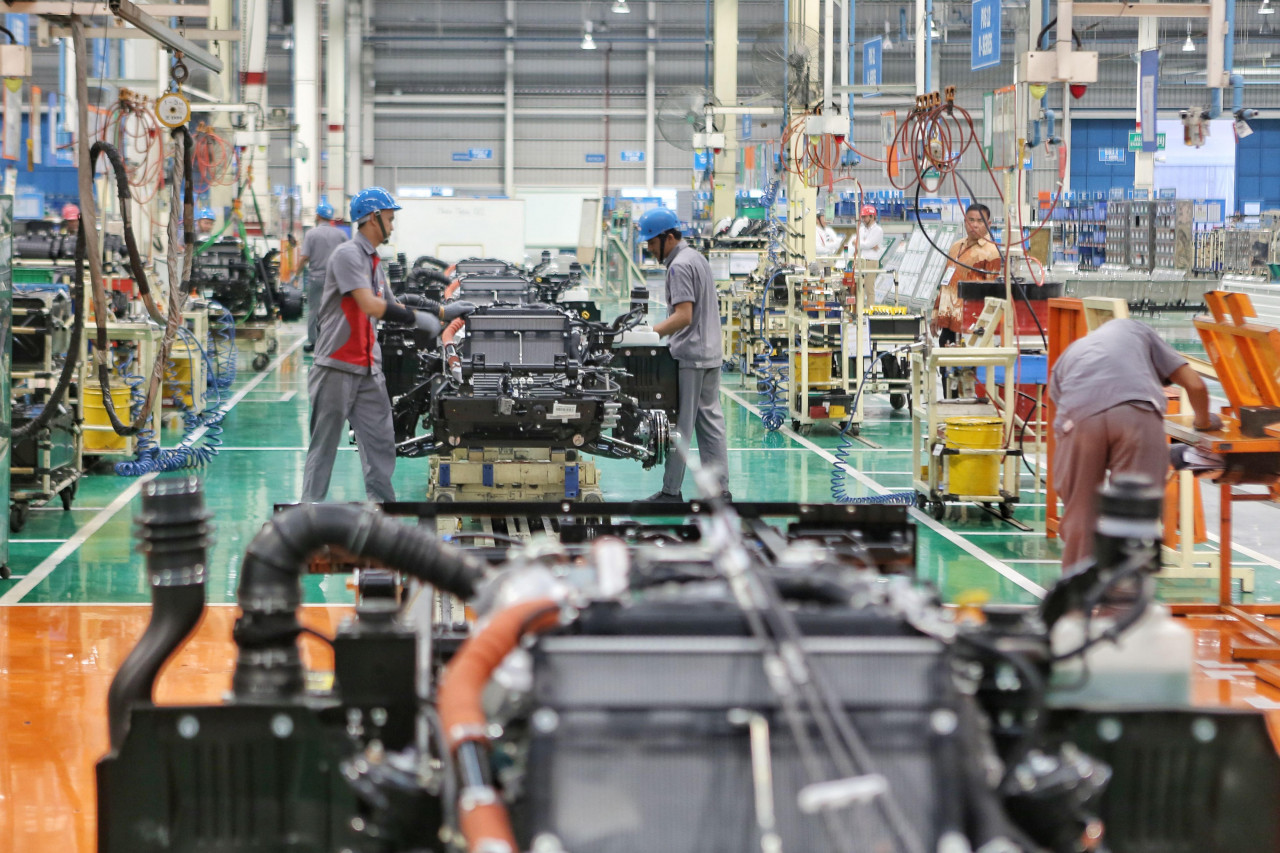Popular Reads
Top Results
Can't find what you're looking for?
View all search resultsPopular Reads
Top Results
Can't find what you're looking for?
View all search resultsCan Indonesia improve its workers’ productivity?
Change text size
Gift Premium Articles
to Anyone
W
ith a gross domestic product (GDP) of US$1.11 trillion and 273 million people, Indonesia should have been a major industrial hub in Southeast Asia. But it is not a major player in industrial production nor exports. It lags behind many of its ASEAN peers in many aspects.
Why?
There may be several reasons for the continuous decline in the manufacturing sector, especially in labor-intensive industries. The main reason for this situation is Indonesia’s low-quality workforce. Indonesian workers’ productivity is one of the lowest in Southeast Asia. Most Indonesian workers do not possess skills that are required for industries.
Vice President Ma’ruf Amin recently expressed his disappointment of the low productivity of Indonesian workers.
“One of the criteria for quality human resources is the level of their productivity. If we talk about productivity, especially productivity of workers, we are not the best one in ASEAN,” Ma’ruf said while speaking at the Open University (UT) graduation ceremony in Jakarta on July 21.
According to the 2019 Asian Productivity Organization (APO) Productivity-Databook, Indonesia is in fifth position in ASEAN’s per-worker labor productivity rankings. The book is an annual publication.
Indonesian workers’ productivity stood at $26,000 per worker, while Singapore topped the list with $142,300 per worker. Indonesia lags behind not only Singapore but also Malaysia, Thailand and Vietnam. These countries have better educational and vocational institutions.
Recently, the Japan External Trade Organization (JETRO) conducted a survey among Japanese companies about productivity in the manufacturing sector in Asia, including Southeast Asia. Shockingly, Indonesia scored 74.3 out of 100, lower than Laos, which scored 76.2. Philippines was number one with a score of 86.3.
“If we look at the figure, I also want to point out that Indonesia’s productivity is below the ASEAN [average score] of 78.2,” JETRO Jakarta senior director Wataru Ueno told reporters during the report’s launch. With this lower productivity rate, how can Indonesia progress in industrial production? If this continues, Indonesia will end up a huge market for many countries.
The main reason for lower productivity is education.
According to Ma’ruf, education is the key to a quality workforce. But education in Indonesia is itself in the doldrums.
“Our education system is in bad shape. Higher education in Indonesia is very expensive and its quality is very low,” Supriadi (not his real name), a lecturer at a private university, told The Jakarta Post on Wednesday.
The quality of Indonesia’s teaching staff is also low. About 70 percent of university lecturers have just a master’s degree. At many universities, undergraduates teach undergraduate students. Several foreign companies in Indonesia frequently complain about the quality of university graduates.
“Most of Indonesia’s fresh graduates are not employable. We have to train them for two to three years,” said John Anderson, who works in a foreign company.
According to Statistics Indonesia (BPS), Indonesia has some 126 million active workers, of which around 12.27 million — or 9.7 percent of the total workforce — are university graduates. Around 62 percent of the total workforce has a high school education.
Many people cannot afford Indonesia’s costly higher education. According to a recent study conducted by the Global Business Guide, Indonesia has 4,498 universities. Most of these universities produce very low-quality graduates.
To overcome this problem of lower productivity, Indonesia should begin improving the quality of its universities, especially the quality of lecturers. The government must train existing workers to improve their productivity. The government has given permission to universities to recruit foreign lecturers. It is a good sign, but it will take a long time before we see any results.
President Joko “Jokowi“ Widodo wanted to improve the quality of Indonesia’s human resources as the country is moving toward Industry 4.0. The government has prepared several plans to enhance the skills and productivity of the country’s workforce. It wants to develop more vocational training centers, allocate more state budget funds to human resource
development and prepare the preemployment card program to provide training incentives for workers.
But the government’s capacity is limited. For example, the Manpower Ministry is planning to train around 228,000
workers to improve their skills and then improve productivity. This number is a small one, given the country’s huge workforce.
Indonesia may need at least 113 million skilled workers by 2030. How can it achieve this target?
The focus of education must be changed from social sciences to science and technology, as the country is in need of more engineers, technicians and managers.
The COVID-19 pandemic is posing a serious challenge to educational institutions and the Manpower Ministry cannot run its programs to boost the quality and productivity of the country’s human resources.










